If you’re on the hunt for a destination that unlocks the real essence of Japan, where culture, history, and tradition come to life, look no further than Shizuoka. This gem, slightly off the beaten path but easy to reach by Shinkansen from Tokyo and Kyoto, is your ticket to an adventure where historical charm meets breathtaking scenic beauty. This article invites you on a journey through some remarkable spots around the Central and Western regions of Shizuoka Prefecture, respectively centered on the cities of Shizuoka and Hamamatsu. Ready to go?
Admiring the Beauty of Mount Fuji
Shizuoka Prefecture boasts countless places where you can catch a spectacular view of the sacred mountain of Japan, Mount Fuji.
We are introducing two locations that promise to etch unforgettable memories into your travel experience. With fingers crossed, we hope you will visit them on the perfect day when Mount Fuji unveils its breathtaking splendor.
Nihondaira: A Stunning View of Fuji from a Terrace Designed by a Starchitect
Your adventure in Shizuoka Prefecture begins with a visual feast at an elevation of 307 meters on a hillside deck, offering a 360-degree panoramic view of Mount Fuji, the Port of Shimizu, the Izu Peninsula, and the Southern Alps. Designed by the world-renowned architect’s office Kengo Kuma & Associates, whose credits include the Tokyo 2020 Olympics’ main venue, the Nihondaira Yume Terrace showcases the region’s natural allure through a stunning wooden structure. Crafted from wood abundant in Shizuoka Prefecture, the building harmonizes with its surroundings, providing a perfect introduction to the area.
Miho no Matsubara: One of the Most Scenic Spots in Japan
About 45 km southwest of Mount Fuji’s summit lies the picturesque Miho Peninsula, home to the famed Miho no Matsubara. Recognized as one of Japan’s three most beautiful pine groves and scenic spots, Miho no Matsubara offers an enchanting scene: a blend of lush green pine trees, Mt. Fuji’s majestic presence, the white waves caressing the shore, and the deep blue hues of the sea.
This view is a picture-perfect experience for every visitor, making it no surprise that it is a registered constituent asset of the “Fujisan UNESCO World Cultural Heritage Site”.
Getting to Know Japan’s History in Shizuoka Prefecture
The central region of Shizuoka Prefecture is dotted with places that retain the unique atmosphere of historical post towns along the old Tokaido Highway, as well as spots associated with the Tokugawa family, so you can enjoy the history and culture of the early modern period.
Kunozan Toshogu Shrine: The Last Home of Lord Tokugawa Ieyasu
Delve into the history of Japan at Kunozan Toshogu Shrine, a designated National Treasure with a history of over 400 years. It contains the remains of Tokugawa Ieyasu, founder of the Edo Shogunate in 1603, and a man who earned the respect of the Imperial Court and the Japanese people, serving as a guardian of the nation’s peace.
After passing through the majestic torii gateway, ascend the 1,159 stone steps, each offering a slightly unique view, and explore the museum housing a collection of weapons used by successive shoguns.
Kashibaya: Go Back in Time at an Inn on the Old Tokaido Route
You can continue your historical exploration at Kashibaya, an old inn that used to represent Okabe-shuku, the 21st post station on the Tokaido Route. Located in Fujieda, the building is a registered cultural property and is part of the “Yaji-san and Kita-san Sunshu Journey”. Yaji and Kita are the main characters of “Tokaidochu Hizakurige” by the famous playwright Jippensha Ikku, a comic picaresque novel about two pilgrims’ misadventures on the Old Tokaido Route in the Edo Period. This novel sparked the first major travel boom in Japan, and to this day you can still experience the joy of travel in Sunshu (the old name for the area of Shizuoka and Fujieda), where Yaji and Kita once inspired many people to travel.
Step into Kashibaya, and you’ll find yourself transported back in time. The first floor recreates the scene from “Tokaidochu Hizakurige,” where Yaji and Kita are entertained by the gracious landlady. It’s a glimpse into the past, a tangible connection to the tales that once unfolded on the ancient Tokaido Highway.
But Kashibaya is not just a museum. The gift shop Bussankan Kashibaya offers a delightful variety of local products and crafts. Here, visitors can savor amazake (a sweet drink made from fermented rice) or snack on kashiwa mochi (rice cake wrapped in sweetened oak leaves). Adjacent to the museum is a warehouse renovated into a cafe, the perfect spot to linger and reflect on the historical journey you’ve embarked upon.
Waterfall Meditation and Fabric Dyeing: Two Different Ways to Experience Japanese Culture in the Hamamatsu Area
Hamamatsu offers a great range of community-based experiences allowing the visitor to connect with local culture and people. Whether you are a craft enthusiast or a soul looking for spiritual enlightenment, you will find an activity tailored just for you. Just make sure you are open and willing to learn something new!
Waterfall Training at Yusanji, an Ancient Buddhist Temple near Hamamatsu
Yusanji Temple is an ancient Shingon temple founded over 1,300 years ago, nestled in the silent forests of a sacred mountain. Home to Yakushi Nyorai, the Buddha of medicine and healing, the temple is known for its curative powers, especially for eye-related diseases. The nationally designated important cultural properties—the temple’s gate and the three-story pagoda—stand out beautifully against the lush greenery. In autumn, the temple attracts worshippers seeking solace amidst the vibrant foliage.
At the temple, you can experience the powerful “waterfall meditation”, a kind of ascetic practice where you stand under the waterfall wearing a thin white kimono while listening to a monk chanting a sutra. Feeling the force of the water on your body, you can empty your mind and feel energized after the experience.
Experiencing the Traditional Japanese Art of Chusen-zome Dyeing in Hamamatsu
Are you more of a crafty person than a spiritual one? Then immerse yourself in the traditional Japanese art of dyeing known as Shizome, a technique born during the Meiji Era. Hand-dyed with a unique array of colors, Chusen-zome offers a depth that only manual craftsmanship can achieve. The city of Hamamatsu, a major producer of yukata, invites you to try your hand at this ancient art by dyeing a tenugui hand towel.
The Hamamatsu Shizome Somen cloth, known for its pliability and breathability, becomes softer with use. Learn the traditional techniques, create your own color combination, and design a personalized tenugui. It will make the perfect souvenir of your time in Shizuoka Prefecture!
Eat and Stay in Western Shizuoka Like a Local
No exploration is complete without savoring the local cuisine, and Shizuoka proudly presents an array of culinary delights. Visitors will surely have the chance to taste the most renowned specialties, such as the abundant seafood, fruits, and of course green tea, of which Shizuoka Prefecture is a top-class producer. Allow us to introduce two hidden culinary gems and a unique accommodation option that promise to immerse you in the authentic local experience, be it contemporary or reminiscent of bygone eras.
Enjoy Shizuoka Oden in a Retro Side Street
Shizuoka Oden, a beloved dish among locals, beckons you to Aoba Oden Street and Aoba Yokocho near Shizuoka Station. Wander through 1960s-era retro alleys, where around 20 oden shops await with their bright red lanterns. “Kikyo” has been in business in the oden scene for 39 years.
Their most popular dish, daikon radish, is soft enough to be pierced with chopsticks. When you bite into it, the radish releases a burst of flavor as the meticulously prepared broth—a clear golden elixir brewed for 16 hours—spreads across your palate.
Eat Tororo Soup like an Edo-period Traveler
Do you know tororo-jiru? It’s a traditional sticky soup, made with grated wild yam mixed with dashi broth and miso, and eaten over barley rice. The most famous place in Shizuoka to have tororo is, without a doubt, the long-established restaurant Chojiya in Mariko-shuku. Founded in 1596, it even appeared in Utagawa Hiroshige’s series of woodblock prints “The Fifty-Three Stations of the Tokaido”. In 2022, it was registered as a national tangible cultural property and is considered to be the oldest existing restaurant in Shizuoka Prefecture.
Once you pass through the brick doorway, you will feel like you slipped into the ukiyo-e times. Enjoying the nostalgic taste of tororo soup while thinking of Edo Period travelers will make you experience Japan in a unique way.
Discovering the Authentic Charm of Rural Living
For those seeking an immersive encounter with the traditional Japanese lifestyle, the guest house Tabinoya offers a farm-stay experience that goes beyond the traditional notions of tourism. In this 70-year-old farmhouse, nestled amidst tea fields with a beautiful view of Mount Fuji, you will have the chance to enjoy a laid-back stay including green tea experiences with the locals. Unlike conventional sightseeing, this kind of accommodation experience provides an authentic taste of village life and is recommended to travelers who are intrigued by countryside living and want to contribute to its sustainability, people desiring an extended stay, and tea enthusiasts eager to grasp the nuances of traditional tea-making.
Western and Central Shizuoka are a fascinating blend of Japan’s rich history, cultural legacy, and natural beauty. Whether admiring the panoramic views of Mount Fuji, climbing the historic steps of Kunozan Temple, following the traces of old Edo travelers, or indulging in the local cuisine, every moment in Shizuoka promises an unforgettable experience. Embark on this journey to unravel the layers of Japan’s past and present, all while gazing upon the iconic silhouette of Mount Fuji.
You want to learn more about Shizuoka Prefecture? Check out our other articles about the highlights of Eastern and Central Shizuoka:
- Eastern Shizuoka: Ways to Enjoy the Culture, Nature, and History
- Mid and Eastern Shizuoka: Uncover the Hidden Gems
Sponsored by: Shizuoka Prefectural Government Office


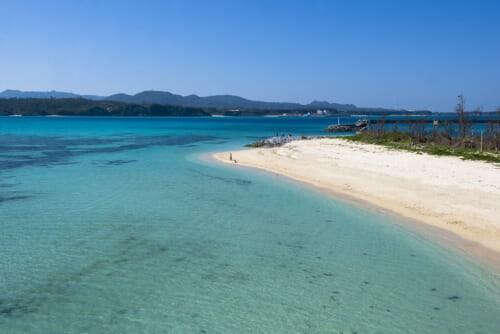
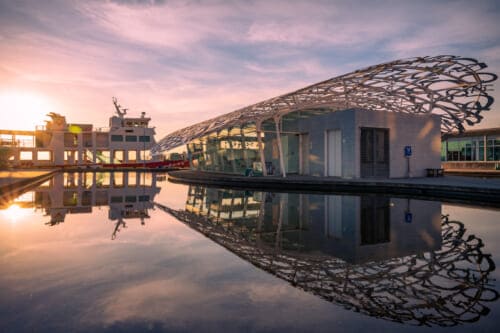
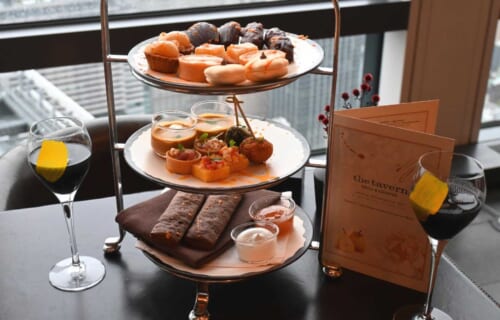
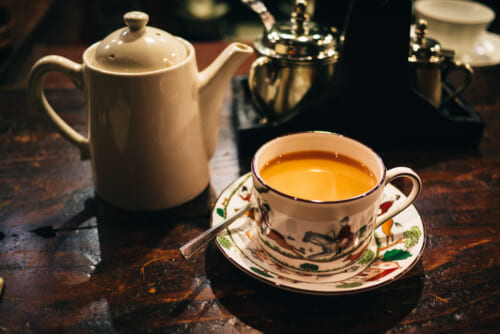

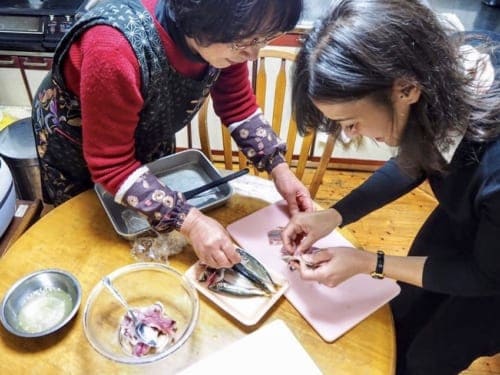


No Comments yet!